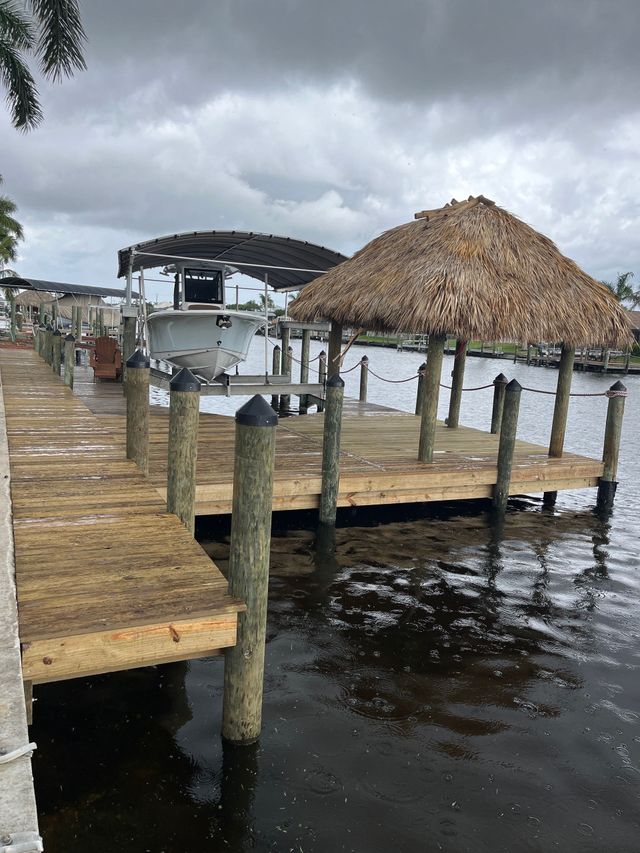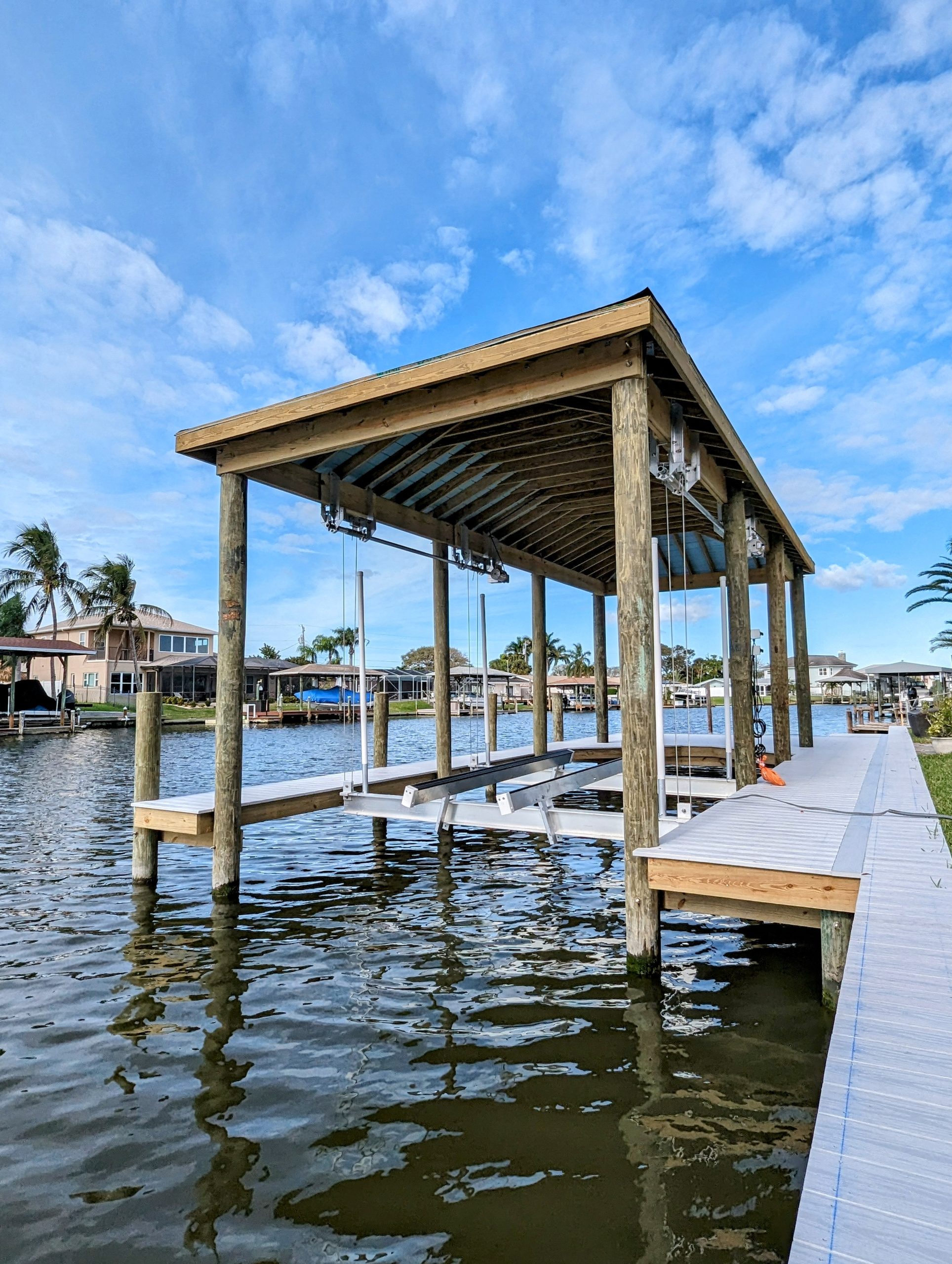DIY Tips for Simple Dock Repairs You Can Deal With
Wiki Article
Exactly How to Address Common Dock Repair Service Issues for Safe Water Tasks

Identifying Common Dock Issues
Determining usual dock concerns is crucial for maintaining the performance and security of your waterside building. Routine examinations can aid discover issues before they end up being extreme, ensuring both the longevity of the dock and the safety and security of those who use it.Another usual trouble is the destruction of flotation protection gadgets. These gadgets are necessary for keeping the dock buoyant, and any damage or slits can trigger the dock to checklist or sink. Routinely inspecting for leaks or waterlogged floats can preempt extra substantial issues.
Additionally, algae and barnacle buildup on the dock's surface area can develop slippery and harmful problems. This biofouling not just positions a danger to customers however can additionally increase the damage of the dock materials.
Finally, checking for signs of corrosion on steel parts is crucial. Rust can jeopardize the integrity of the dock's structure, making it hazardous. By consistently determining these common dock concerns, you can guarantee that your dock remains useful and protected for years to find.
Fixing Rotting Timber
When dealing with the concern of rotting wood on your dock, it is critical to act quickly to avoid more degeneration. Begin by thoroughly evaluating the entire framework to recognize all impacted areas. Utilize a screwdriver to penetrate the timber; if it sinks in conveniently, the timber is likely rotted and needs instant attention.Be certain to reduce back to healthy and balanced, solid wood, ensuring you remove all endangered material. After removal, treat the continuing to be wood with a timber chemical to avoid future rot.
Next, replace the removed areas with marine-grade lumber or pressure-treated wood, which are extra resistant to water damages. Protect the new pieces with stainless-steel or galvanized bolts to avoid deterioration. In addition, using a water resistant sealant to the brand-new wood can supply an extra layer of security.
Protecting Loose Boards
Just how do you ensure your dock continues to be functional and risk-free for all its users? One critical element is safeguarding loosened boards, which can otherwise position substantial risks. Loose boards not only boost the danger of stumbling yet can likewise endanger the structural integrity of the entire dock.
For reinstallation, use galvanized or look at these guys stainless steel screws, as these materials use superior resistance to deterioration in aquatic atmospheres. Ensure the screws are long enough to pass through deep into the underlying support structure, however not as long that they stick out with the dock's surface area. Pre-drilling pilot holes can assist prevent the timber from splitting.
Finally, keep a routine evaluation timetable to determine and attend to any kind of new issues quickly. By safeguarding loose boards efficiently, you contribute to the general safety and security and long life of your dock, making it a trustworthy platform for water tasks.
Supporting Unsteady Pilings
Guaranteeing the stability of unstable pilings is vital to preserving a practical and safe dock. Utilize a degree to inspect for vertical Check This Out placement and guarantee they are driven deep enough into the substratum to provide sufficient support.If the pilings are discovered to be unstable, one effective approach for reinforcement is using added bracing. Cross-bracing with dealt with lumber or galvanized steel can considerably boost stability. Support the dental braces safely to both the pilings and the dock frame to distribute loads evenly.

Normal maintenance and periodic review of the pilings' stability are crucial to guaranteeing long-term dock safety and functionality.
Replacing Rusty Equipment
Attending to unstable pilings is simply one element of maintaining a dock's integrity; one more crucial concern is changing rustic hardware. Over time, direct exposure to wetness and salt can cause the oxidation and rust of screws, braces, and screws, compromising the whole structure's safety and security. Routine examination for corrosion is vital, especially after serious weather condition or seasonal adjustments.When corroded hardware is identified, prompt action is required. Begin by picking marine-grade stainless steel or galvanized equipment, both created to resist the extreme aquatic environment. Ensure that you have the proper devices, such as wrenches and screwdrivers, to securely read the article remove the old, corroded pieces without causing further damage to the dock.
After eliminating the corroded equipment, completely tidy the influenced areas to eliminate any residual rust or particles. Use a rust-inhibiting primer to exposed metal surface areas prior to mounting the new equipment. Tighten up all components firmly to stop future helping to loosen, and occasionally check the fittings to make sure ongoing stability.
Replacing rustic equipment not just expands the dock's life expectancy however also considerably improves the safety of water activities. By proactively handling rust, you safeguard both the structure and its users, guaranteeing a satisfying and safe waterside experience.
Conclusion
Routine evaluations and maintenance are necessary to attend to typical dock fixing issues and ensure secure water tasks. By identifying and fixing problems such as rotting wood, loose boards, unsteady pilings, and corroded equipment, structural stability and durability can be considerably boosted. The application of marine-grade products and appropriate therapies additionally fortifies the dock versus environmental stressors. Such proactive actions add to the general safety and security and capability of dock structures, promoting a protected atmosphere for water-based activities.Making certain the security of water tasks hinges significantly on the appropriate upkeep and repair of docks (Dock Repairs). These devices are important for keeping the dock resilient, and any kind of damage or leaks can cause the dock to list or sink. By regularly identifying these usual dock concerns, you can guarantee that your dock stays secure and functional for years to come
Guaranteeing the stability of unstable pilings is extremely important to keeping a useful and safe dock.Normal examinations and maintenance are important to address common dock repair issues and make certain safe water activities.
Report this wiki page